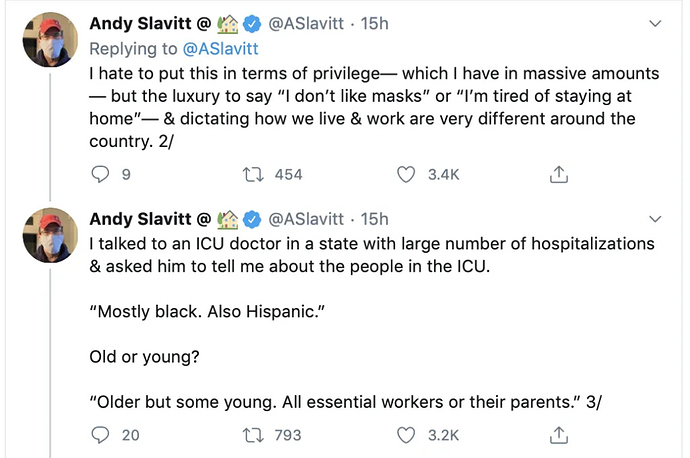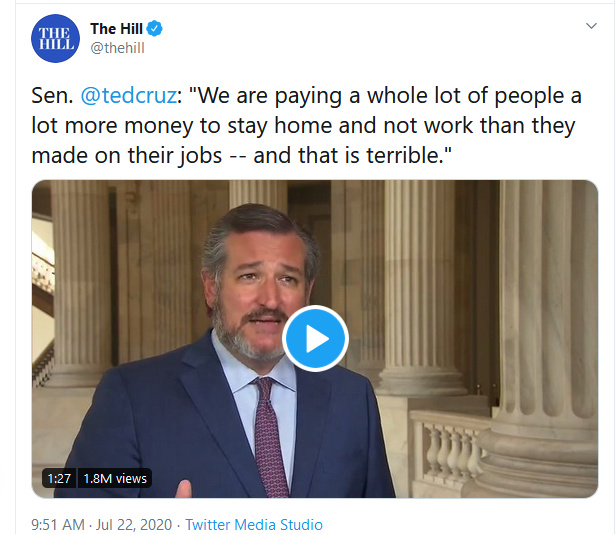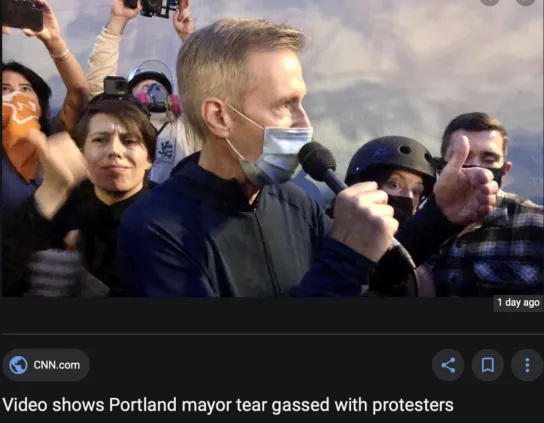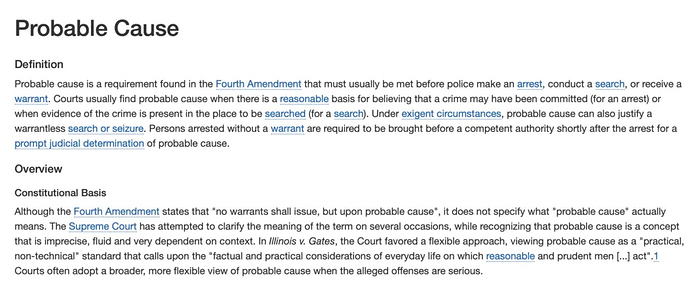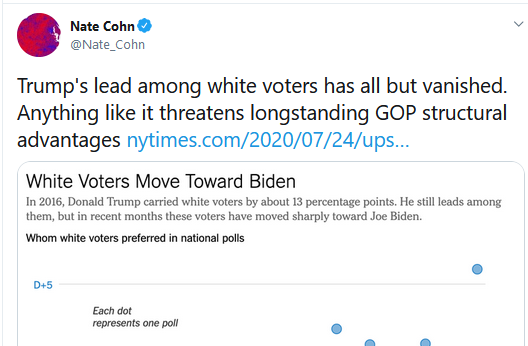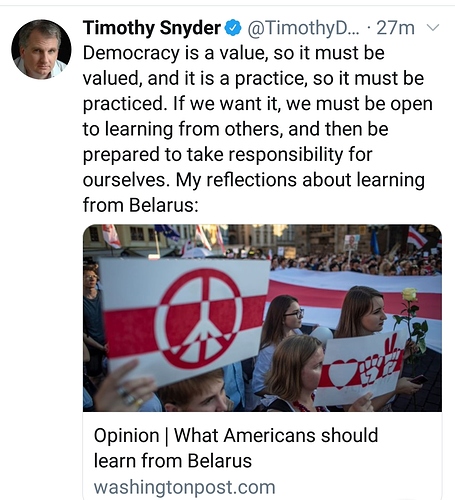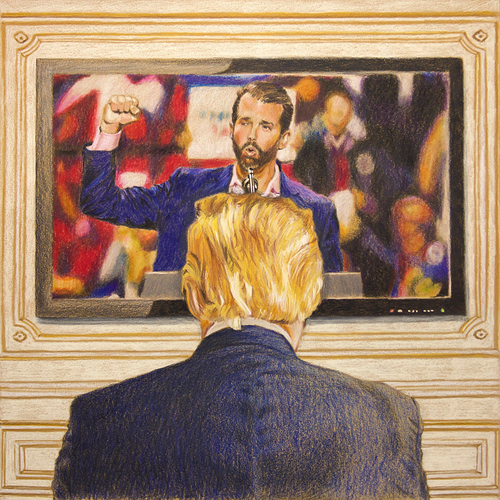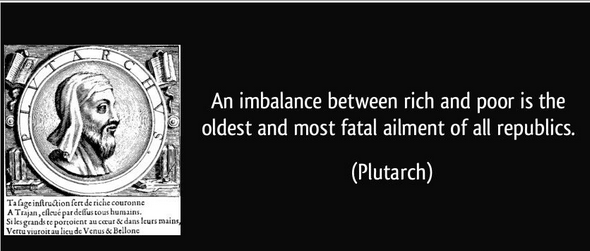A look at Don Jr., who has gone all in on his father… and politics.
Donald Trump Jr. Is Ready. But for What, Exactly?
Of all the president’s children, he has the strongest connection to the politics, voters and online disinformation ecosystem that put his father in the White House. What will he do with it?
A case can be made that the apex of Donald Trump’s presidency occurred early this year, around the time of the State of the Union address. The Feb. 4 speech to a joint session of Congress began with Trump’s ignoring the outstretched hand of Speaker Nancy Pelosi — a pointed snub of the Democrat who, two months earlier, led his impeachment. For the next 78 minutes, Trump boasted about his accomplishments, like building an economy that “is the best it has ever been”; dished out red meat to his base, such as pledging a national ban on late-term abortions; and theatrically dispensed favors, including a Presidential Medal of Freedom for the conservative talk-radio host Rush Limbaugh.
On that February evening, the first reported death from the coronavirus in the United States was more than three weeks away, and it appeared as if Trump had bent the office of the president, its trappings, the institutions of government and, indeed, all of American politics to his will. After he finished, Pelosi, standing behind Trump on the House rostrum, dramatically ripped up her copy of his speech. It was a made-for-meme moment — and at first, the meme’s natural constituency seemed to be the left, for whom Pelosi’s paper-shredding provided a rare flash of emotional gratification in an otherwise dark time. (The next day, the Republican-led Senate would vote to acquit Trump of all the impeachment articles, mooting the Democrats’ monthslong crusade.) But then Trump’s eldest child, Donald Trump Jr., had an idea.
It came to him while he was eating lunch at the Trump International Hotel in Washington the day after the speech. Trump Jr. envisioned a video featuring the most benign and unobjectionable parts of his father’s address — hailing a Tuskegee Airman, reuniting a soldier who had just returned from Afghanistan with his wife and children, giving a private-school scholarship to a Black fourth grader from Philadelphia — spliced with footage of Pelosi ripping up the speech, as if she were objecting to these beneficent gestures and not to the president himself. Trump Jr. called Benny Johnson, a veteran right-wing meme maker who works for the conservative student group Turning Point USA, and asked him to get cracking.
A few hours later, Trump Jr. posted the results of Johnson’s handiwork to his social media accounts. “Pelosi ripped up @realDonaldTrump’s speech last night,” he wrote on Twitter with a link to the video. “In that speech were stories of American Heroes & American Dreams. Their stories are more powerful than her hate.” The video immediately went viral, with the president himself tweeting it the next day.
Pelosi demanded that Twitter and Facebook take down the video, arguing that it was deceptively edited. The social media companies refused. Trump’s allies used the spat to drive even more traffic. “It would be soooooo terrible if this video hits 10,000,000 views,” tweeted Dan Scavino, the White House social media director. In the end, the video racked up 50 million views, according to Johnson. (Thirty-seven million people watched the State of the Union address on TV.) “Don Jr. is a meme general in the meme wars,” Johnson says, “and he is commanding the D-Day invasion.”
The episode was emblematic of Trump Jr.’s role in his father’s political carnival. In one respect, the brazen disingenuousness and virality of the meme — and the way in which one led to the other — was unmistakably Trumpian. But there was a discipline and polish to Trump Jr.’s move that his father’s shambolic, logorrheic self-expressions so often lack. (Trump’s own initial reaction to the speech-ripping was to go on a late-night-into-early-morning Twitter tear, retweeting Pelosi criticism by everyone from his former U.N. ambassador Nikki Haley to the 300-follower Twitter account @JonMart93888215.) And yet Trump Jr.’s gloss did nothing to soften his father’s message. It wasn’t Trump watered down. It was Trump distilled.
When Trump ran for president in 2016, Trump Jr., who is now 42, was involved but hardly central to the effort. His sister Ivanka and her husband, Jared Kushner, exercised sweeping influence over the campaign. Trump Jr., by contrast, was assigned small, discrete tasks, like putting his outdoorsmanship on display in a pheasant-hunting photo op with his brother, Eric, before the Iowa caucuses to counter attacks that his father was a liberal city slicker. (“Don, you can finally do something for me — you can go hunting,” his father told him, according to GQ magazine.) If he tried to go outside his narrow lane, disaster tended to follow. In the summer of 2016, he arranged for a Trump Tower meeting between Trump campaign officials and a Russian lawyer promising dirt on Hillary Clinton, an encounter that later became a focus of Robert Mueller’s investigation into possible collusion between the Trump campaign and the Russian government. The Trump team’s defense of Trump Jr. boiled down to the argument that he wasn’t a traitor, just an idiot — “by no means a sophisticated political actor,” Chris Christie said. Michael Cohen, at the time Trump’s personal attorney, later told a Senate panel that “Mr. Trump was very quick to tell everybody that he thinks Don Jr. has the worst judgment of anyone he’s ever met in the world.” Or, as the president himself put it, according to The Atlantic, “He’s not the sharpest knife in the drawer.”
So it is one of the many surprises of Trump’s presidency that Trump Jr. has grown into arguably his father’s most valuable political weapon. “Don Jr. represents the emotional center of the MAGA universe,” says Jason Miller, a senior adviser on Trump’s re-election campaign. Before the pandemic, he was crisscrossing the country as his father’s most-requested campaign surrogate. Since the coronavirus curtailed his travel plans, he has become one of the Republican Party’s top virtual fund-raisers. His Twitter, Instagram and Facebook accounts have a combined 11 million followers and are vital cogs in the Republican messaging machine.
After spending much of his adult life searching for a purpose, Trump Jr. seems to have found one in politics. His siblings can often seem to be patiently waiting out their father’s presidency. Eric, who has been running the Trump Organization in his father’s absence, continues building hotels and luxury condominiums. Ivanka and Kushner went to work in the White House, but she has told friends that she’s looking forward to returning to New York and to her lifestyle brand.
But Trump Jr. does not want to go back to the way things were before. He has been electrified, and transformed, by his father’s presidency. He has largely given up the duties that go along with his title as an executive vice president of the Trump Organization in exchange for full-time politics. He has divorced — after 12 years of marriage and five children — Vanessa Haydon, who generally shied away from politics. His girlfriend of the last couple of years, with whom he recently bought a house in the Hamptons, is Kimberly Guilfoyle, a former Fox News host and conservative commentator who serves as the finance chair for his father’s re-election campaign.
Now, as he works to secure a second term for Trump this November, Trump Jr. is also thinking about his own political future. He is wagering that by going all in on his father’s presidency and the tribal passions it has unleashed, he can claim his own durable place in American politics — that whether his father leaves the White House in 2021 or 2025, the answer to what comes after Trump will be more Trump.
On Saturday, March 7, about 100 people gathered in a gilded ballroom at Trump’s Mar-a-Lago club in Palm Beach, Fla. The resort town was playing host to a retreat for major donors to Trump’s re-election campaign that weekend, and the highlight was a lavish party on Saturday night to celebrate Guilfoyle’s 51st birthday. The Trump family was there, save for Trump’s wife, Melania. So were a who’s who of the MAGA universe, including members of Congress, like Representative Matt Gaetz of Florida and Senator Lindsey Graham of South Carolina; Fox News stars like Jesse Watters and Tucker Carlson; administration officials including National Security Adviser Robert O’Brien and Trump loyalists like Rudy Giuliani; and even, for a time, President Jair M. Bolsonaro of Brazil, who was meeting with Trump at the club that weekend. Sergio Gor, Guilfoyle’s chief of staff on the Trump campaign and Trump Jr.’s collaborator on a forthcoming book, played M.C. and D.J., standing on a stage between two spinning disco balls. “It was like a Gatsby-esque extravaganza,” one guest recalls.
Trump Jr., an avid fisherman, had been up since before dawn, unsuccessfully pursuing a hammerhead shark at a nearby inlet. Poolside at Mar-a-Lago later that morning, among the club’s guests outfitted in white linen, he showed off pictures of the six-foot nurse shark he did catch to Gaetz; with his camouflage and fishing rod, he looked as if “he just came off the set of ‘Duck Dynasty,’” Gaetz recalls. By the evening, he had traded camo for a suit and tie and was seated at the head table alongside Guilfoyle in her gold-sequined minidress. “Princess, you are the best,” he said, according to The Washington Examiner, when it was his turn for a toast. “Thank you for everything that you do. I love you very much, and get back to work, OK?”
He turned to the guests. “You are in this room for a reason,” he said. “You guys have been the warriors, the fighters, the people who have been there every time we have made a call, every time we made a request.” He added, “I’m sure Kimberly will hit you up.” As the president stood beside Guilfoyle and led the group in a rousing rendition of “Happy Birthday,” Trump Jr. looked on, beaming. When the song was finished, Guilfoyle shouted, “Four more years!” The president kissed her on the head and smiled at his son.
The two men had for years had a difficult relationship. Trump’s ex-wife Ivana recounts in her 2017 book, “Raising Trump,” that when she suggested naming their newly born first child Donald Jr., Trump protested: “You can’t do that! What if he’s a loser?” After his parents divorced, a 12-year-old Trump Jr. refused to speak to his father for a year. Later, he seemed intent on escaping the celebrity businessman’s shadow and reputation. At the Fiji fraternity at the University of Pennsylvania, Trump Jr.’s nickname was Ron Rump, and his fraternity brothers called him Ron. “He loved it, perhaps because it gave him an extra level of anonymity,” one of them recalls. Rather than working for the Trump Organization immediately after college, Trump Jr. spent a year and half in Aspen, Colo., skiing, hunting, fishing and tending bar at night.
In 2001, he moved back to New York City and took his place at the company. But his greatest contribution to the family business came on the set of “The Apprentice,” which he joined as an occasional boardroom judge in the show’s 2006 season. He was valued by the producers as a stabilizing presence, running interference between the cast and crew and the volatile star, his father. When Trump would berate crew members for a mistake, one “Apprentice” producer recalls, Trump Jr., speaking from a well of personal experience, would console them: “It’s not your fault; it’s your turn.”
People who worked on the show remember him often trying to lighten the mood. “He provided the comic relief, because his dad doesn’t have a sense of humor and Ivanka wasn’t someone who made jokes,” says Clay Aiken, the “American Idol” winner who appeared on “The Celebrity Apprentice” in 2012. “He was perfectly fine to take the piss out of himself, but sometimes he’d make a joke about his dad — and then you could tell he was really nervous his dad wouldn’t like it. His self-esteem was in the gutter.”
Much of the popular image of Trump Jr., especially among liberals, seems to stem from those years: “uselessly trying to impress a man who can only be impressed by himself” (GQ); “a recurring liability and a chronic headache” (The Daily Beast); the “Fredo” of the Trump family (Twitter). In the first days of Trump’s presidency, he seemed poised for more of the same. After the election, while Ivanka and Kushner headed to Washington, Trump Jr. stayed behind in New York, ostensibly to run the Trump Organization with Eric. But he had little to do. He was in charge of the company’s international portfolio, and while he could continue working on overseas projects that predated his father’s election, he couldn’t embark on new ones.
For a time, he tried to play a role in shaping the administration’s public-lands policy and other issues related to his outdoor activities, which had earned him the Secret Service code name Mountaineer. Senator Steve Daines, a Republican from Montana, used an elk-hunting trip with Trump Jr. in November 2016 to lobby the incoming administration to pick an interior secretary from the Mountain West. “I wanted a Westerner,” Daines says, “and Westerner doesn’t mean West Virginia. It doesn’t mean Oklahoma.” Trump Jr. recommended Ryan Zinke, then a Montana congressman and a friend of Daines’s, for the Department of Interior job. Zinke got the nod but resigned in December 2018 after a scandal-plagued tenure.
Trump Jr.’s relatively low public profile ended on July 8, 2017, when The New York Times revealed his role in arranging the Trump Tower meeting the previous summer between Trump campaign officials and the Russian lawyer and her associates. Though little seems to have come out of the meeting, a bipartisan Senate Intelligence Committee report released this month found that the Russians had “significant connections to the Russian government, including the Russian intelligence services.”
A few days after the Times article ran, Trump Jr. went on Sean Hannity’s Fox News show to defend himself in a softball interview. “There was nothing to tell,” he said of the meeting. “I wouldn’t have even remembered it until you started scouring through this stuff.” His stock among conservatives rose as he proceeded to wage a sustained campaign against the news media, Mueller and congressional investigators pursuing their own Russia inquiry. (It was reported this month that in 2019, the Senate Intelligence Committee’s Republican and Democratic leaders made a criminal referral of Trump Jr. and several other Trump associates to the Justice Department for lying or providing contradictory testimony to the panel.) He became a frequent guest on Fox News and an enthusiastic participant in the political fights of the moment. “Don’s favorite part of politics is getting punched in the face with a jab and responding with a haymaker,” one person close to him says.
To those who know Trump Jr., his attraction to politics was not surprising. “He was the only family member who talked politics before his dad ran for president,” the person close to him says. “He’s the only one of the kids who would have found a way into politics if the dad hadn’t run for office.” And those politics have always tilted hard to the right. Speaking to the Senate Intelligence Committee in 2018, Stephen K. Bannon, the Trump adviser who had run the right-wing website Breitbart, said, “I’d describe Don Jr., who I think very highly of, as a guy who believes everything on Breitbart is true.” Or as Sam Nunberg, an adviser to Trump’s 2016 campaign, says, “Don’s a real winger, and I mean that as a compliment.”
In early 2018, Trump Jr. approached Andy Surabian, a young Republican operative who worked on the 2016 campaign and then in the White House for Bannon. Trump Jr. was by then a formidable presence on social media and Fox News, but, he explained to Surabian, he wanted to move into real politics by stumping for Republican congressional candidates in the midterm elections. Surabian put together a campaign schedule for him that, from May to November, featured 70 events in 17 states. Among the candidates he campaigned for was Matt Gaetz, a young congressman from Florida who spent much of his first term loudly demonstrating his loyalty to Trump. “We need fighters!” Trump Jr. said from behind a lectern decorated with a “Make America Gaetz Again!” sign. Now, Gaetz says, “constantly candidates are begging me to get his phone number, or a photo with him, or a chance for a retweet or an endorsement.”
The president can still be brutally dismissive of his son, grousing about his enthusiasm for firearms or questioning his political intelligence, according to multiple people present for such conversations. When Trump appeared on a special Father’s Day edition of “Triggered,” Trump Jr.’s biweekly online talk show for the Trump campaign, the awkwardness between the men was painful. Trump Jr. asked the president if he liked his beard. “Get rid of it,” Trump growled, to peals of nervous laughter from Trump Jr.
But the president is, at heart, a transactional person. As Trump Jr.’s political star has risen, Trump advisers say, so has Trump’s appreciation for him. Cliff Sims, a former White House communications aide, recalls watching television with the president in the private dining room off the Oval Office one afternoon when Trump Jr. appeared on the screen. “The president stopped what he was doing and turned up the volume,” Sims says. “He literally said to me, ‘He’s really good at this, isn’t he?’ He had this kind of feeling like, He’s a chip off the old block.”
Trump Jr. is now a key player in the Republican Party’s 2020 operation. He and Guilfoyle have become fund-raising powerhouses, coaxing large donations from high-dollar donors. (Guilfoyle is reportedly paid $15,000 a month by the Trump campaign.) Email solicitations sent out by the National Republican Congressional Committee, the House Republicans’ election arm, under Trump Jr.’s name have so far raised more than $3 million in small-dollar donations. “Triggered” is the most watched of the Trump campaign’s slate of digital shows. In September, Trump Jr. plans to return to the campaign trail four days a week; in October, that’s expected to increase to six days a week.
The greatest measure of his newfound political clout is the heated competition among Republicans to offer the most sycophantic quote about him. Gaetz hails Trump Jr. as “the most dynamic voice that you hear in American politics other than when it’s preceded by ‘Hail to the Chief.’” Sean Spicer, the former White House press secretary, calls him “a downright rock star.” Jeff Roe, Senator Ted Cruz’s political strategist, deems him “a next-level, generational talent.” Republicans speak of Trump Jr.’s hunting-and-fishing prowess the way Red Guards once talked about Mao swimming the Yangtze. “I’ve shot with Green Beret snipers,” Daines says, “and Donald Trump Jr. is as good a shot as anybody I’ve ever shot with. He’s a remarkable marksman. And by the way, on fly fishing, too — I’m not trying to exaggerate his skills, but I’ve been around a lot of guys that fly fish, and he’s a guide-quality fly fisherman.”
In addition to Surabian, Trump Jr.’s innermost inner circle consists of Arthur Schwartz, a New York Republican operative with a reputation for the political dark arts; Tommy Hicks, a Texas private-equity scion and hunting buddy of Trump Jr.’s who’s now co-chairman of the Republican National Committee; and Charlie Kirk, the founder of Turning Point USA who became friendly with Trump Jr. when he served as his body man during the final months of the 2016 campaign. A little further outside are people like Richard Grenell, who served as Trump’s ambassador to Germany and acting director of national intelligence; Cliff Sims; Sergio Gor; and young Republican congressmen like Gaetz and Lee Zeldin of New York.
Through phone calls and text chains, the group — which Gaetz calls “the wolf pack”— formulates Trump Jr.’s political moves. “It could be fairly argued that Don Jr. and his political team,” a Trump adviser says, “have a better rapid-response operation than the White House communications office has ever had.” And Trump Jr.’s favorite form of rapid response, like his father’s, is the social media post. “He stares at his iPhone all the time,” says a Republican operative who has traveled with Trump Jr. “He’s locked and loaded.”
The wolf pack is made up of some of the most cynical and situational people in G.O.P. politics, whose priorities oscillate between “owning the libs” and loyalty enforcement among Republicans. Last October, Trump Jr. began tweeting against Lindsey Graham for not doing enough, as the Senate Judiciary Committee chairman, to protect his father from impeachment, raising an online army under the hashtag #WheresLindsey to demand that Graham issue subpoenas on Trump’s behalf. That month, Graham attended a World Series game with the president. “For at least three innings, Lindsey was squawking at the president to get Don Jr. off his ass,” says Gaetz, who was with them at the game. (Graham’s office declined to comment.)
In February, Trump Jr. posted to his Instagram account a picture of Mitt Romney, who had just voted to convict his father in the Senate impeachment trial, in some tragically high-waisted jeans with the caption, “MOM JEANS: Because you’re a pussy.” It was a juvenile move, and it was the subject of some debate within the wolf pack. Over lunch that day, Trump Jr. asked Surabian what he thought of the meme. (If the message is deemed too inflammatory, it will often appear on Schwartz’s Twitter account instead of Trump Jr.’s.) The two ultimately concluded that while the language and image would undoubtedly generate negative headlines, it would also grab eyeballs, and that Trump Jr.’s own attached comment, calling on Romney to “be expelled from the @GOP,” justified the post. “The meme got attention and guaranteed it went viral,” the person close to Trump Jr. says, “but it was the message that Mitt should be kicked out of the caucus that we cared about and wanted to make sure got out there.”
During the 2016 campaign, Trump Jr. posted to Instagram a picture, titled “The Deplorables,” of the faces of various high-profile Trump supporters superimposed on the bodies of characters from the action movie “The Expendables”; one face was that of Pepe the Frog, a cartoon character that had by then been embraced as a mascot by white supremacists online. He also posted on Twitter a picture of a candy bowl with the text: “If I had a bowl of Skittles and I told you just three would kill you. Would you take a handful? That’s our Syrian refugee problem.” The trope of undesirable people hiding among good ones dates to the Holocaust, and the “poisoned candy” metaphor had become popular with xenophobes online.
In each instance, Trump Jr. professed ignorance. “I’ve never even heard of Pepe the Frog,” he told George Stephanopoulos of ABC News. “I thought it was a frog in a wig. I thought it was funny.” Elsewhere, he said the Skittles picture was “a statistical thing.” And yet throughout his father’s presidency, Trump Jr. has preserved his winking proximity to the far-right and conspiracist fringe, while avoiding his father’s clumsier cycles of embraces and disavowals.
The president in the past several months has routinely retweeted the Twitter accounts of followers of the QAnon conspiracy theory, which posits that Trump is doing battle with a cabal of Democratic and “deep state” elites who run a child-sex-trafficking ring. When Trump was asked about QAnon, which the F.B.I. has labeled a domestic terrorism threat, at a White House news conference this month, he replied, “I’ve heard these are people that love our country.” Trump Jr. has himself avoided such signal-boosting and overt praise of QAnon, but in May he posted to Instagram a picture of Joe Biden saying, “See you later, alligator!” alongside an image of an alligator responding, “In a while, pedophile!” When Jake Tapper of CNN subsequently called out the Trumps for the smear, Trump Jr. responded on Twitter: “Jake, I’m sorry that you’re more upset (Triggered!) about a joke meme than you are @JoeBiden’s gross habit of touching & sniffing young girls.” Early this year, he posted a picture of himself to Instagram holding a custom AR-15-style rifle emblazoned with the “Jerusalem cross,” a symbol used by Christian soldiers during the Crusades that has been adopted by far-right extremist groups; the rifle’s magazine clip was decorated with an image of Hillary Clinton behind bars.
Surabian, speaking for Trump Jr., told CNN that “symbols on firearms depicting various historical warriors are extremely common within the Second Amendment community,” and that the Clinton-behind-bars image was a meme intended to “mock Hillary Clinton” and “trigger humorless liberals.” As for the Biden-as-pedophile posts, Trump Jr. maintained that he was just “joking around.” When I asked whether Trump Jr. believes in the QAnon conspiracy theory, Surabian replied, “Of course not.” But in July, Trump Jr. finally ran afoul of Twitter by tweeting a viral video making false claims about hydroxychloroquine’s efficacy in treating Covid-19. Twitter hid the post from view and suspended his tweeting privileges for 12 hours. “Big tech is activist liberal,” he complained on Fox News.
By then, he was already adept at strategically picking fights outside the conservative media bubble. Last fall, when he published his book “Triggered” — a farrago of tossed-off personal history and predictable political attacks that sold 287,000 hardcover copies, thanks, in part, to bulk purchases by the Republican National Committee — Hachette Book Group pressed him to do some mainstream media appearances. Trump Jr.’s team, seeking a spectacle, reached out to “The View.” He came prepared. When Joy Behar asked him about his father boasting on the “Access Hollywood” tape of sexually assaulting women, Trump Jr. fired back that Behar had worn blackface to a Halloween party in the 1970s and that Whoopi Goldberg had once defended Roman Polanski. “We’ve all done things that we regret,” he said, “if we’re talking about bringing the discourse down.” The only “View” host he didn’t go out of his way to antagonize was Meghan McCain, even offering her a semi-apology for his father’s attacks against hers. “We realized that the biggest headline to come out of his appearance could not be Meghan McCain confronting him about his dad,” says the person close to Trump Jr.
In February, Trump Jr. traveled to Iowa on the eve of the state’s caucuses in a show of force. Although his father faced no serious opposition for the Republican nomination, he was leading a group of some 80 congressmen, cabinet members and other Republicans to stump for Trump there and, more important, rough up the Democrats. He was just about to speak at a “Keep Iowa Great” event outside Des Moines when a Jewish protester began yelling that Trump Jr.’s father was responsible for a rise in anti-Semitism. As the protester was hauled out of the rally by security guards, Trump Jr. shouted, “I don’t think anyone’s done more for Israel and American Jews than Donald Trump!”
With the crowd cheering him on, he launched into a tirade against the reporters in the room, then pledged to do everything in his power to help his father win re-election. “We don’t just have to lose,” he said. “We don’t just have to roll over and die because the other side wants us to and their buddies in the mainstream media want us to. That’s not how it works anymore.” He added, “We will fight harder than any people you’ve ever seen for the next 10 months to make sure that this continues.”
At the time, it seemed likely that Trump would win a second term. But then the coronavirus happened, infecting over 5.5 million Americans (including Guilfoyle) and killing more than 170,000 of them, paralyzing the economy and imperiling Trump’s re-election prospects. At the end of the Democratic National Convention this month, he trailed Biden in the RealClearPolitics national polling average by 7.6 points — not an insurmountable deficit, but a daunting one.
At the White House and inside the Trump campaign, there remains a stubborn, almost defiant sense of optimism — born, they believe, out of experience — that the president will win in November. “I can say that, having been there four years ago, things looked a lot worse back in 2016 than whatever crisis politically the president might be going through right now,” Charlie Kirk says. When I asked Jason Miller about the degree of worry inside his office, he replied, “I haven’t picked up on any of the W-word that you just threw around in such a cavalier fashion.”
But Trump Jr. is apparently worried. “Don’s the only person who thinks they’re going to lose,” says a prominent conservative activist who is in regular contact with him and other key members of Trump’s political operation. “He’s like, ‘We’re losing, dude, and we’re going to get really hurt when we lose.’” An electoral defeat in November, Trump Jr. fears, could result in federal prosecutions of Trump, his family and his political allies. He has told the conservative activist that he expects that a Biden administration will not participate in a “peaceful transition” and instead will “shoot the prisoners.” (“This is 100 percent false,” Surabian says. “Don does not have these concerns.”)
Even assuming his worst fears aren’t realized, a Trump defeat in November would pose an existential question for Trump Jr. He has become a figure of genuine political value, but that value remains mostly a function of his status as the premier surrogate for his father. This is the most treasured currency there is in a Republican Party in which political fortunes now rise and fall based on proximity and devotion to Donald Trump — but what happens to that currency if Trump leaves the stage? At the same time, it is difficult to see Trump Jr. coming fully into his own as a political figure until he does what he struggled unsuccessfully to do in his younger years: escape his father’s shadow. Although he would obviously prefer that his father win in November, people close to him say that, in some ways, having Trump out of the White House would be advantageous for Trump Jr. They use words like “unshackled” and “free” and speculate excitedly about his running for office in Montana or Florida — or, a few dare to dream, even the presidency — in 2024.
Those who are familiar with Trump Jr.’s thinking, though, say that’s not going to happen — at least not in the next four years. “Don can do everything he wants to do in politics,” says the person close to him, “without running for office.” The wolf pack talks about how Trump Jr. would be a natural podcaster or talk-radio host; Fox News — or perhaps a new conservative TV channel — could give him his own show. He has expressed interest in playing a prominent role in a revivified National Rifle Association and is open to the idea of serving as chairman of the Republican National Committee. This month, he will release his second book, “Liberal Privilege,” a rehash of Biden’s various supposed sins that he wrote during the pandemic lockdown.
Trump has marveled to aides at the response Trump Jr. received when, before the pandemic, he appeared at Trump rallies, where he was typically greeted with cheers of “46! 46!” (Donald Trump is the 45th president of the United States.) “It’s sort of cool if you’re at a stadium of 15,000 people and they start chanting ‘46’ when you’re speaking,” Trump Jr. told the comedian Jim Norton in February when he appeared on the satellite-radio show Norton hosts with Sam Roberts. Still, he said, “I don’t know that I’d like the day job, and that’s a big part of it.”
Later in the interview, he complained that “someone in the mainstream media will write an article” about his cursing on the show. (No one in the mainstream media ever did, but then, “owning the libs” has never required actual owning of the libs.) “Did you ever think, though, that you’d get to be an adult, and then there’d be somebody who wanted to write a newspaper article that you used the F-word?” Roberts asked.
“No, I did not,” Trump Jr. said, “because we’re not adults, guys. The reality is, like, there are no adults in the room anymore.”
There is also a link to listen to the article on the site.
